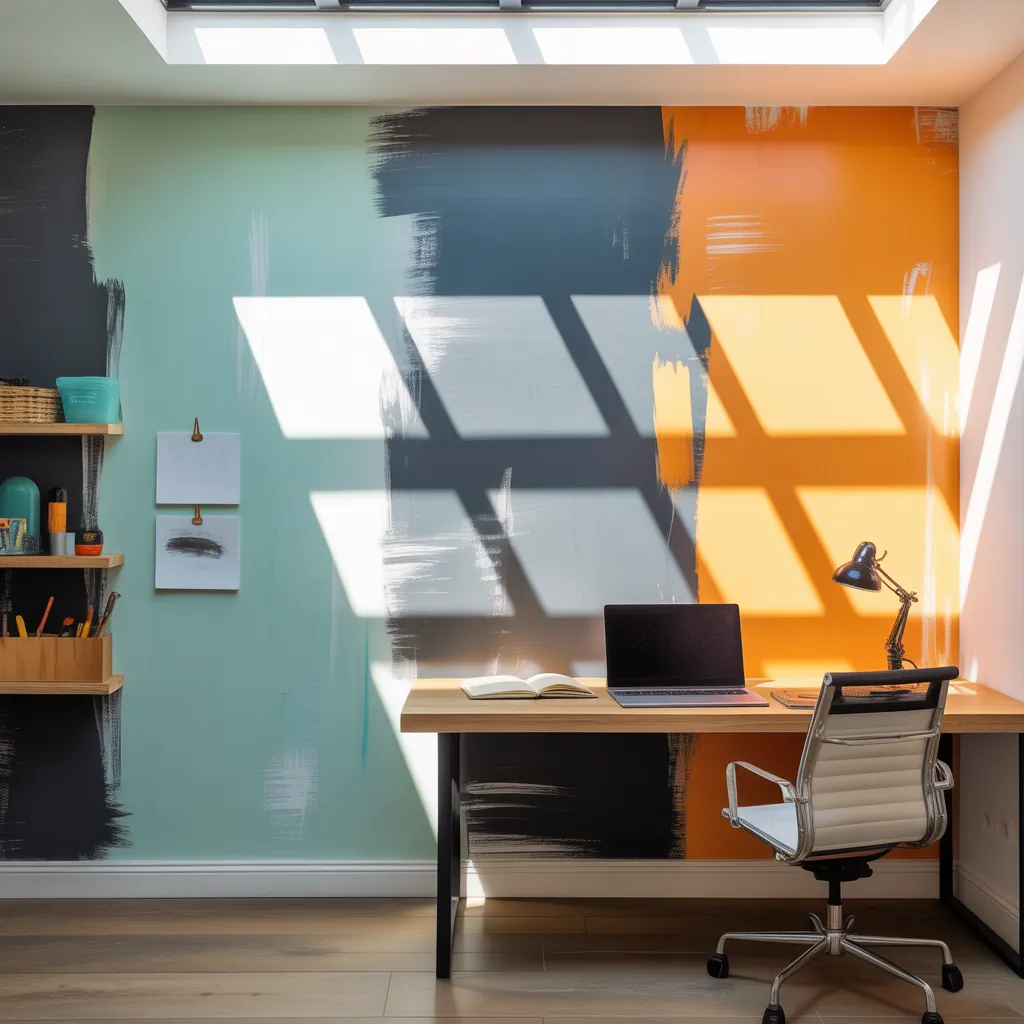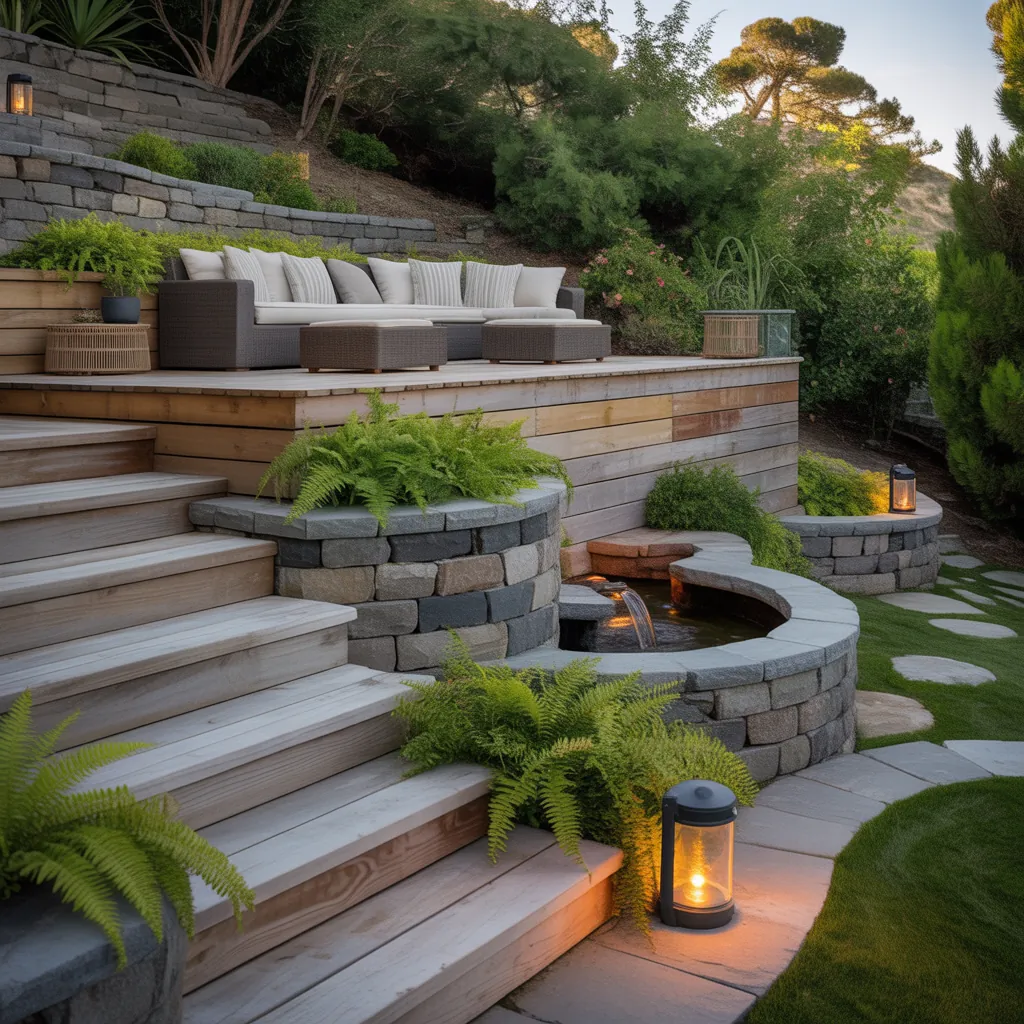Have you ever sat down at your desk and realized the dull paint is sapping your focus? Maybe you started a home office project months ago and the walls still look the same. Repainting is one of the fastest, most affordable ways to refresh a room — and with the right office painting ideas, you can create a space that boosts productivity, reflects your style, and stays within budget.
Why a fresh coat of paint makes a difference
Before we dive into styles, colors, and DIY steps, remember: color affects mood and performance. Whether you need calming tones for concentration or energetic hues for creativity, choosing the right paint and technique can change how you feel about working at home.
Office painting ideas to boost productivity and style
Below are practical, style-driven painting concepts that work in small home offices and larger dedicated workspaces alike. Each idea includes quick tips or a mini how-to so you can start planning right away.
1. Accent wall with a bold color
Pick one wall—usually behind your desk or the wall you face—and paint it in an accent color. This is one of the easiest office painting ideas with high impact.
- Best colors: deep teal, navy, moss green, or a warm terracotta.
- DIY tip: cut in carefully around trim, use painter’s tape for crisp lines, and start with a primer if switching from a very light to a very dark tone.
2. Two-tone walls for visual interest
Divide the wall horizontally or vertically. A darker bottom with a lighter top or vice versa creates depth without overwhelming the room.
- Step-by-step: measure and mark the dividing line, use a level to draw a guide, apply painter’s tape, then paint the first color. Let dry, remove tape, re-tape for the second color if needed.
- Design tip: use semi-gloss for the lower half to resist scuffs and an eggshell finish above for a soft look.
3. Stripes and color blocking
Stripes (vertical to make ceilings feel higher, horizontal to widen the room) or geometric color blocks add personality and can be customized to match furniture and artwork.
- DIY tip: use a laser level or straightedge for precision, high-quality painter’s tape, and paint in thin coats to avoid bleeding.
- Color pairing: pair a neutral with a vibrant hue—charcoal with mustard, soft grey with blush pink, or cream with ocean blue.
4. Soft, calming palettes for focus
If your priority is concentration, choose muted blues, greens, or warm greys. These tones reduce visual distraction and create a professional backdrop.
- Productivity hack: add a slightly warmer trim color (e.g., off-white or beige) to make the room feel inviting without being distracting.
5. Funky finishes and faux treatments
For a creative studio, consider chalkboard paint for a planning wall, or a subtle metallic glaze on an accent wall for texture.
- Real-world advice: test a sample patch first—specialty finishes can be harder to touch up or change later.
Choosing the right paint, tools, and finish
Your choice of paint and tools determines the final result. Here’s what to consider:
- Finish: Eggshell or satin for most walls (easy to clean); semi-gloss for trim; flat for ceilings.
- Paint quality: Mid- to high-grade paints offer better coverage and durability — fewer coats and easier cleaning.
- Low-VOC options: Pick low-VOC or zero-VOC paints for indoor air quality, especially in small home offices.
- Tools: Angled brushes for cutting in, 9″ rollers with the appropriate nap for your wall texture, painter’s tape, drop cloths, and a paint tray.
Office painting ideas: Step-by-step makeover
Use this checklist to plan a smooth DIY repaint.
- Clear the room or move furniture to the center and cover with drop cloths.
- Patch holes and sand rough spots; clean walls with a damp cloth to remove dust.
- Apply painter’s tape around trim, windows, and door frames.
- Prime the walls if switching undertones or covering stains.
- Paint the ceiling first, then cut in around edges, and finally roll the larger wall areas.
- Apply a second coat if necessary after proper drying time.
- Remove tape carefully, reattach outlet covers, and rearrange the room once dry.
Time-saving tip: paint the ceiling and accent wall on one weekend and let the rest dry overnight—touch-ups are easier when you work in short, focused sessions.
Budget-friendly and small office painting ideas
You don’t need to splurge. A few smart moves can keep costs low:
- Buy sample pots to test colors before committing to gallons.
- Use painter’s tape creatively—masking off a narrow accent stripe is cheaper than specialty wallpapers.
- Repurpose leftover paint from other rooms for color blocking or to paint furniture.
Design inspiration and color palettes
Here are palettes that work well in a variety of home office styles:
- Calm & Minimal: Soft dove grey, warm white trim, pale sage accent.
- Modern & Bold: Charcoal walls, bright mustard accent shelf or wall stripe.
- Warm & Cozy: Taupe, cream trim, terracotta accent for a creative vibe.
- Scandinavian Bright: Crisp white, muted blue accent wall, natural wood tones.
For more project ideas, check out our internal pages on DIY projects, kitchen upgrades, and home design ideas to coordinate color themes throughout your home.
Frequently Asked Questions
1. What paint finish is best for a home office?
Eggshell or satin is usually best for office walls—both balance durability and low sheen. Use semi-gloss for trim and doors because it cleans easily and highlights architectural detail.
2. How do I avoid paint bleeding under painter’s tape?
Press tape down firmly, use a high-quality tape designed for delicate surfaces, and paint a thin “seal” coat along the tape edge in the base color before applying the accent color. Remove tape while paint is still slightly damp for the cleanest line.
3. How often should I repaint my home office?
High-traffic or sunlight-exposed walls may need repainting every 3–5 years. If you want a fresh look or your work requirements change (lighting, video calls), repaint sooner—the process can be quick and inexpensive with the right plan.
Conclusion — Start your office painting project today
Office painting ideas can be simple or bold, budget-friendly or premium—what matters is choosing a plan that fits your needs and doing the prep work carefully. Whether you try an accent wall, two-tone split, or a calming full-room palette, painting is a DIY project that rewards you immediately with a brighter, more functional workspace.
Ready to transform your office? Grab your paint samples, set aside a weekend, and start with one wall. If you enjoyed these ideas, explore more hands-on inspiration on our DIY projects and home design ideas pages. Share your before-and-after — we’d love to see your makeover!



